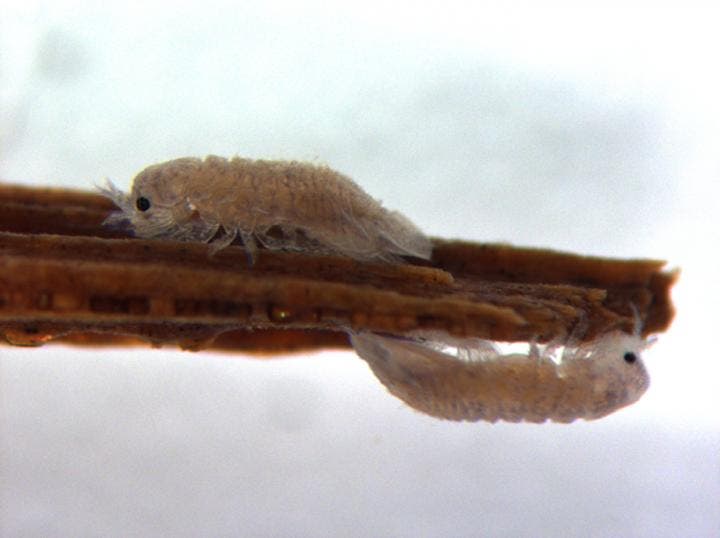A tiny wood-eating crustacean could hold the key to sustainably converting wood into biofuel, researchers say.

Gribble (Limnoriidae) play an important ecological role, but they can also be quite a nuisance — on one hand, they help degrade and recycle driftwood, but on the other hand, they can be devastating for wooden ships or piers. Any piece of timber that they can get a hold of can be seriously damaged. They bore into wood and other plant material, digesting the cellulose and gaining the nutrients (sugars) they need to survive from it.
Now, a new study has shown how these small invertebrates break down the lignin, the key material in the formation of wood and bark. The team, led by the University of York researchers, studied the hindgut of gribble, finding that the key to this digestive process is a class of proteins called hemocyanins.
Hemocyanins are respiratory proteins that use copper binding sites to bind and transport oxygen — providing a somewhat similar role to what haemoglobin does for humans and other mammals. While haemoglobin binds oxygen through its association with iron atoms (which gives blood its red color), hemocyanins do this with copper atoms producing a blue color — which explains why the blood of invertebrates is generally blue. Now, researchers have found, hemocyanins are also vital for the ability to extract sugars from wood.
However, gribble have another trick up their sleeve — or rather, up their gut. Lead author Professor Simon McQueen-Mason, from the University of York, explains:
“Gribble are the only animal known to have a sterile digestive system. This makes their method for wood digestion easier to study than that of other wood-consuming creatures such as termites, which rely on thousands of gut microbes to do the digestion for them.”
“We have found that Gribble chew wood into very small pieces before using hemocyanins to disrupt the structure of lignin. GH7 enzymes, the same group of enzymes used by fungi to decompose wood, are then able to break through and release sugars.”
Dr. Katrin Besser, also an author of the study, said that it’s “fascinating to see how nature adapts to challenges” and how hemocyanins are “incredibly versatile and multi-functional proteins.”
However, researchers believe this can do more than help us figure out one of nature’s wondrous mechanisms: they believe that the process might be replicated at an industrial scale, enabling a better usage of wood as a biofuel.
With the effects of climate change becoming more and more drastic, countries are looking at alternatives for more eco-friendly tools to substitute the usage of fossil fuels. Among them, using wood as biofuel is an idea that has been thoroughly explored. However, producing biofuels is hardly always a sustainable alternative, as several studies have already shown, and may even do more harm than good.
Still, researchers say that using what they’ve learned from gribble, this process could become much greener. Unlike food crops (which are also used to produce biofuels), woody mass doesn’t come into conflict with global food security.
However, even in the most optimistic scenario, this process would still produce a hefty amount of greenhouse gas emissions, though it could, perhaps, be useful as a complementary solution to reduce greenhouse gas emissions. Co-author of the paper, Professor Neil Bruce, from the Department of Biology, concludes:
“In the long term this discovery may be useful in reducing the amount of energy required for pre-treating wood to convert it to biofuel.”
“The cellulase-enhancing effect of the haemocyanin was equivalent to that of thermochemical pre-treatments used in industry to allow biomass hydrolysis, suggesting new options for bio-based fuel and chemicals production.”
The study has been published in Nature Communications.


